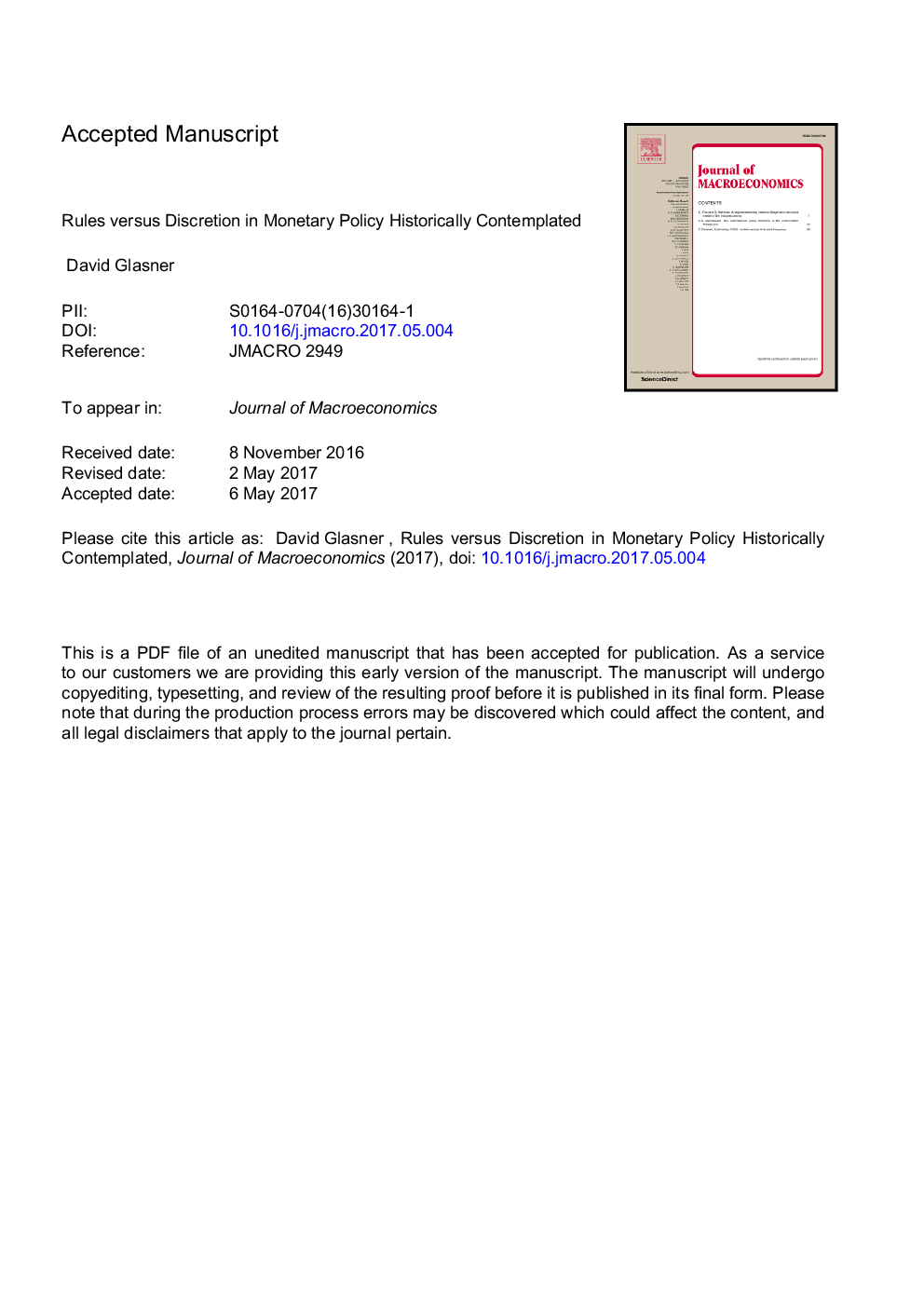| کد مقاله | کد نشریه | سال انتشار | مقاله انگلیسی | نسخه تمام متن |
|---|---|---|---|---|
| 7367012 | 1479218 | 2017 | 50 صفحه PDF | دانلود رایگان |
عنوان انگلیسی مقاله ISI
Rules versus discretion in monetary policy historically contemplated
ترجمه فارسی عنوان
مقررات در برابر اختیار در سیاست پولی از لحاظ تاریخی مورد توجه قرار گرفته است
دانلود مقاله + سفارش ترجمه
دانلود مقاله ISI انگلیسی
رایگان برای ایرانیان
موضوعات مرتبط
علوم انسانی و اجتماعی
اقتصاد، اقتصادسنجی و امور مالی
اقتصاد و اقتصادسنجی
چکیده انگلیسی
Monetary policy rules are attempts to cope with the implications of having a medium of exchange whose value exceeds its cost of production. Two classes of monetary rules can be identified: (1) price rules that target the value of money in terms of a real commodity, e.g., gold, or in terms of some index of prices, and (2) quantity rules that target the quantity of money in circulation. Historically, price rules, e.g. the gold standard, have predominated, but the Bank Charter Act of 1844 imposed a quantity rule as an adjunct to the gold standard, because the gold standard had performed unsatisfactorily after being restored in Britain at the close of the Napoleonic Wars. A quantity rule was not proposed independently of a price rule until Henry Simons proposed a constant money supply consisting of government-issued fiat currency and deposits issued by banks operating on a 100% reserve basis. Simons argued that such a plan would be ideal if it could be implemented because it would deprive the monetary authority of any discretionary decision-making power. Nevertheless, Simons concluded that such a plan was impractical and supported a price rule to stabilize the price level. Simons's student Milton Friedman revived Simons's argument against discretion and modified Simons's plan for 100% reserve banking and a constant money supply into his k% rule for monetary growth. This paper examines the doctrinal and ideological origins and background that lay behind the rules versus discretion distinction.
ناشر
Database: Elsevier - ScienceDirect (ساینس دایرکت)
Journal: Journal of Macroeconomics - Volume 54, Part A, December 2017, Pages 24-41
Journal: Journal of Macroeconomics - Volume 54, Part A, December 2017, Pages 24-41
نویسندگان
David Glasner,
